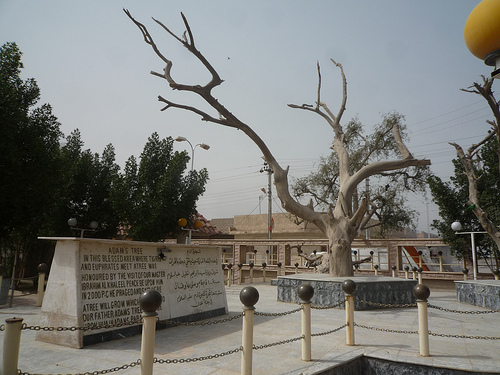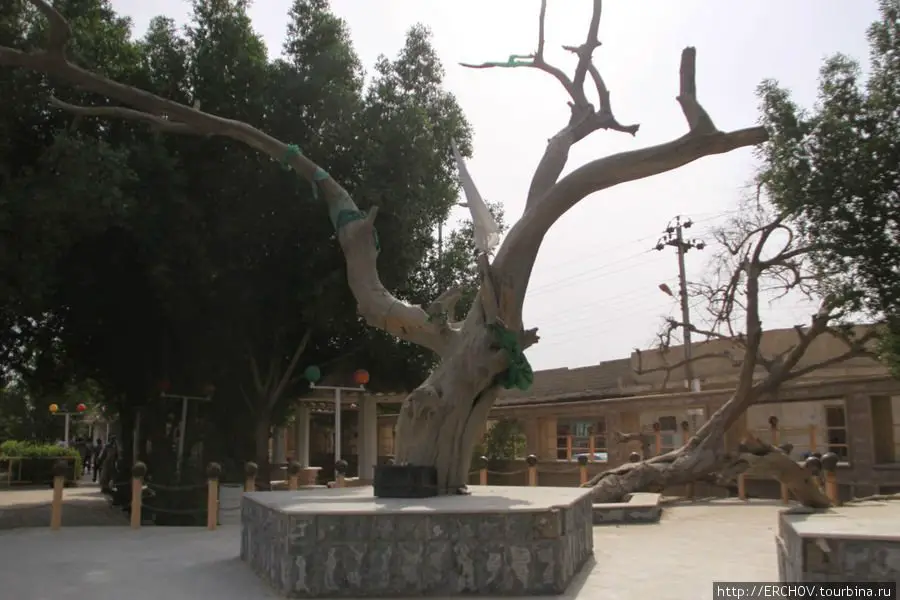According to biblical tradition, the Garden of Eden (Garden of Paradise) was located in southern Iraq, in the city of El Qurna, where the Tiber and Euphrates rivers meet. Here, on the banks of the Tiber, in a small concrete square protected by low brick walls, stands an ancient dead tree. According to legend, this is the tree of the knowledge of good and evil, the one from which Adam and Eve ate.

A hard tried tree, full of symbols
Information about this tree of knowledge goes back a long way. On clay tablets found at these sites during excavations in ancient Mesopotamia, a clay seal was found dating from the 4th millennium BC and called the seal of temptation. The seal depicts a man and a woman reaching for a fruit from a tree.
The tree is also linked to polytheistic traditions in the Middle East since ancient times. According to these traditions, it is customary to plant another tree next to the sacred one in its last stage of existence to continue its sacredness. Thus there are several trees in various stages of decay, often making it very difficult to identify the original sacred tree.
As for the tree of knowledge in El Qurna, it is clearly a deciduous species, not a palm. The locals call it Nabucco, consider it sacred and believe that Adam ate of its fruit. But no one can say for sure what species once stood in its place or how long it has been there.
The tree has been through all sorts of trials and tribulations over the years. During the First World War, British soldiers climbed the tree and broke it. It was repaired with cement. In 1950 a small park was built around it as a gesture of gratitude for the end of the Second World War. During Saddam Hussein's reign the shrine was preserved and a small plaza and concrete platform were even made. In 2003, during the American attacks, the concrete platform was damaged. Today the site is again being restored and there are more trees planted so that the sanctity can be continued.

Although the shrine and the tree of knowledge are associated with the story of the Garden of Paradise, shared by three major current religions - Judaism, Christianity and Islam - the symbol is virtually universal and perpetual in time. Discoveries in the area take the symbol far back into pre-monotheistic times. People from other parts of the country come on pilgrimage to pray at the tree, sometimes tying small pieces of green cloth to the branches as a sign of their faith.
(source: atlasobscura.com)



























Add comment